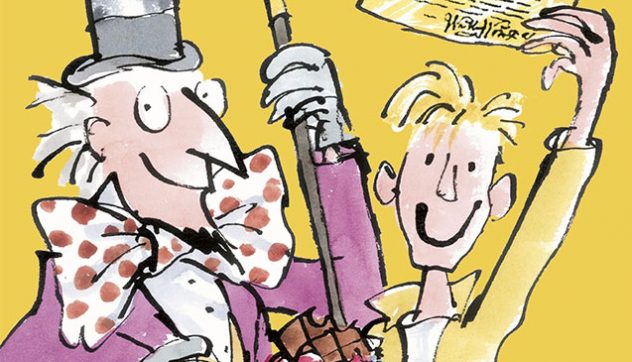
by Sandra Gulland | Sep 26, 2018 | On Character Development, Resources for Writers |
This post is in support of a MasterClass workshop I gave on Developing Character at the Kingston WritersFest, September 2018. (My apologies to those of you who are subscribed to my blog and got this post by accident.)
Books
Story Genius: How to Use Brain Science to Go Beyond Outlining and Write a Riveting Novel (Before You Waste Three Years Writing 327 Pages That Go Nowhere) by Lisa Cron
Believable Characters: Creating with Enneagrams by Laurie Schnebly
The Writer’s Journey: Mythic Structure for Writers, by Christopher Vogler
The Negative Trait Thesaurus: A Writer’s Guide to Character Flaws and The Positive Trait Thesaurus: A Writer’s Guide to Character Attributes, both by Angela Ackerman and Becca Puglisi
Writer’s Guide to Character Traits by Linda N. Edelstein
On Writing: A Memoir of the Craft, by Stephen King
An Actor Prepares by Constantin Stanislavski
The Book of Costume by Millia Davenport
Working; People Talk About What They Do All Day and How They Feel About What They Do by Studs Terkle
Save the Cat by Blake Snyder
Online
Worthwhile Google searches: “writing about characters worksheet,” “character development,” etc.
Unsplash (an excellent database for looking for characters)
Astrology (my go-to astrology site)
Name generators (fun!)
Gotham Writers’ Workshop Character Profile Worksheet
Creating a believable character
The Ultimate Character Questionnaire (over 150 questions)
33 Ways to Write Stronger Characters
Body Language Cheat Sheet for Writers
Dynamic Character: How to Write a Compelling Protagonist (Note: most everything at reedsy.com is worthwhile.)
The Basic Anatomy of a Developed Character
Character sketch template
Writing a character sketch on Scrivener
A basic character sketch template
10 Tips for Creating Conflict
33 Ways to Write Stronger Characters
This Book will Change your Writing Life (about the book Story Genius)
Character mannerisms: Describing character quirks and tics
Creating character: How to make characters come alive
500 Character Quirks and Traits
Character flaw list: 30 intriguing character flaws
How to Create and Use a Character Bible for your Novel
8 Character Development Exercises to Help You Nail Your Character
The Ultimate Character Questionnaire
Body Language Cheat Sheet for Writers
How to Write Flashback: 7 Key Steps
The 7 Tools of Dialogue
7 dialogue rules for writing fantastic conversations
The Perfect Way to Create Fictional Characters
When Your Characters Lack Depth, Interview Them
The Blake Snyder Beat Sheet (highly recommended)
Your Ultimate Guide to Character Development: 9 Steps to Creating Memorable Heroes
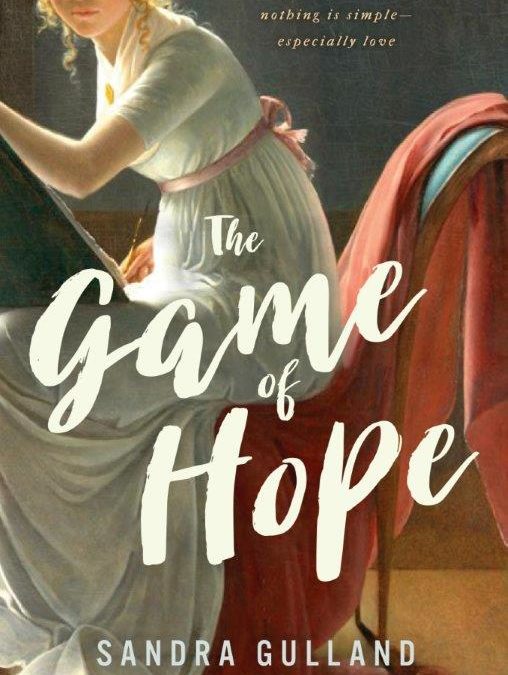
by Sandra Gulland | Apr 15, 2018 | Adventures of a Writing Life, On Plot, On Research, Publication, The Game of Hope, The Shadow Queen, The Writing Process, Young Adult Literature |
On November 2, 2011 (the day before my birthday), my agent, Jackie Kaiser, called to tell me that I’d been made a very tempting offer by Penguin to write two YA novels. One was to be about Josephine’s daughter Hortense, and the second was to be of my choosing.
My husband and I were in Mexico at the time, and two nights before I’d told him that I would never again contract to write a book “in advance.” I simply found it too stressful.
So the timing was a bit ironic. After Jackie’s call, I told my husband, “I’ve just been made an offer I can’t refuse.” Jackie had emailed me a photo of the box the offer had arrived in. Inside were the contract details and chocolates. How charming was that?

Even so, I thought about it carefully for two months. It takes me years (and years!) to write a novel, and I have to feel passionate about it. I have to fall in love with it. So I reread books about Hortense and covered our dining room table with plot points on index cards, considering. I needed to see if there was a story there, an enchanting story about Hortense’s teen years.
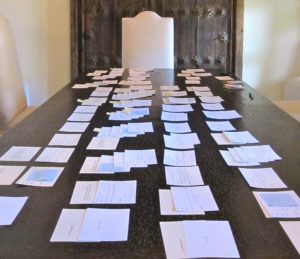
And there was. And it was one I very much wanted to write. By February 9, 2012, I had made up my mind. I would accept the offer. I would write a Young Adult novel about Hortense …
… although not immediately. I was on draft 6.1 of what I was then calling This Bright Darkness, soon to become The Shadow Queen. Plus, as I noted in that blog post of Feb. 9:
Somehow, I feel that I can do all of this all at once: finish This Bright Darkness, begin another adult novel set in the 17th century, write two YAs and a short novel for GoodReads, as well as launch my own e-book imprint.
(Reality has never been my strong suit.)
The Shadow Queen was published and my e-book imprint launched, but the “other adult novel set in the 17th century” had to be put on the back burner and the short novel for GoodReads was regretfully abandoned. Writing a novel requires full attention.
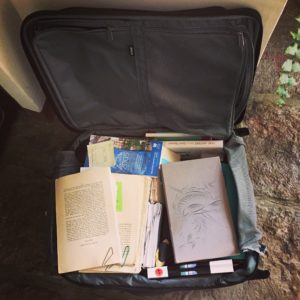
Soon I was carting research books on Hortense back and forth from Mexico to Canada.
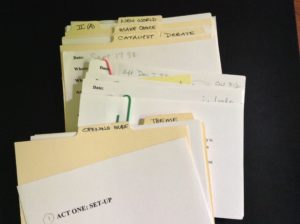
I organized my plot cards, shuffled and re-shuffled them.
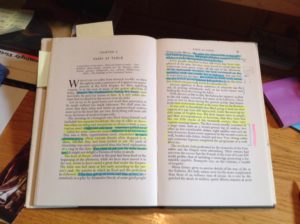
I researched like crazy.
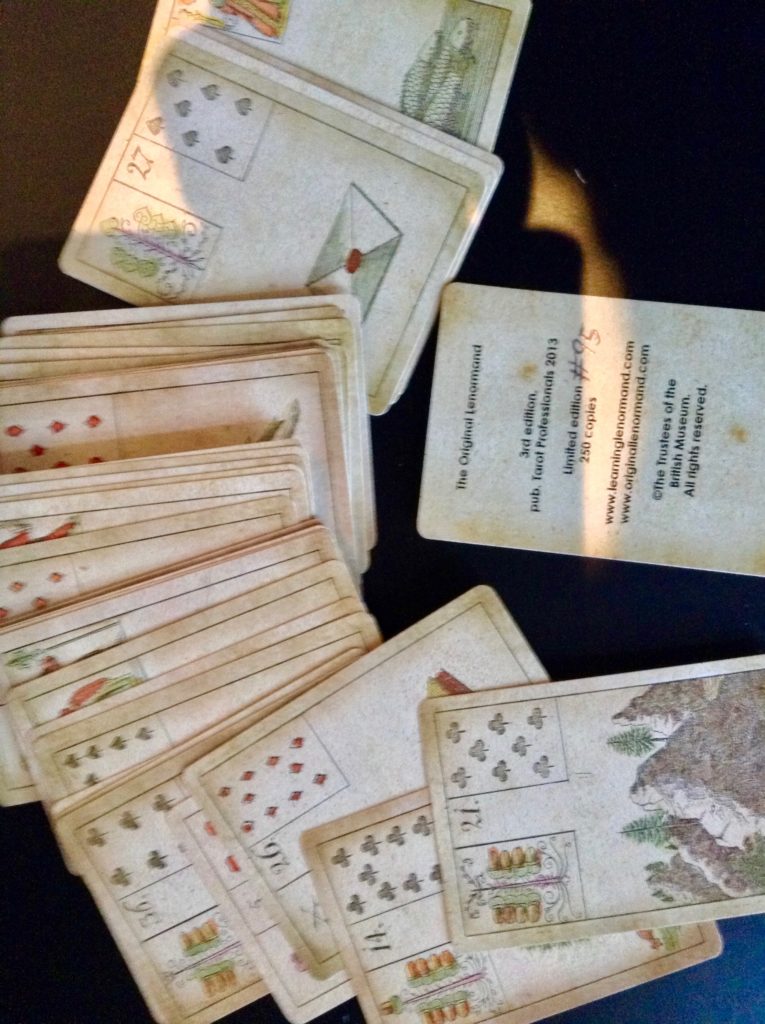
I bought a deck of The Game of Hope and began exploring. (Fun!)
On November 2, 2013, a full two years after receiving the offer from Penguin, I began the first draft.

This is draft 1.7 — that is, the 7th draft of the 1st draft.
Over the next four years, I made two research trips to France.
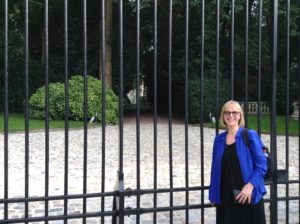
Here I am at the gates to Mortefontaine, the country estate of Napoleon’s brother Joseph.
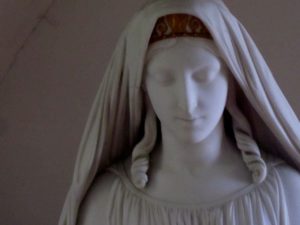
This is a statue of Hortense at her home of exile in Arenenberg, Switzerland, overlooking Lake Constance, now a delightful museum devoted to her memory.

This is a photo of what remains of Madame Campan’s wonderful school in Saint-Germain-en-Laye.
Over time, I had the requisite stack of nine drafts it takes me to write a book.
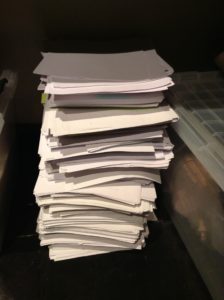
During the four years it took to write The Game of Hope, it went from being a novel told in the present tense to (at a fairly late stage) a novel told in the past tense. The title changed many, many times, and settled, finally, and happily, on The Game of Hope. The cover changed many times as well.

The Game of Hope, Hortense’s story, is now a book. For real. I’ve yet to hold it in my hands, but I will soon, in Toronto on May 1, the official Canadian publication day.
The amazement I feel about this long and magical process never grows old.
SaveSave
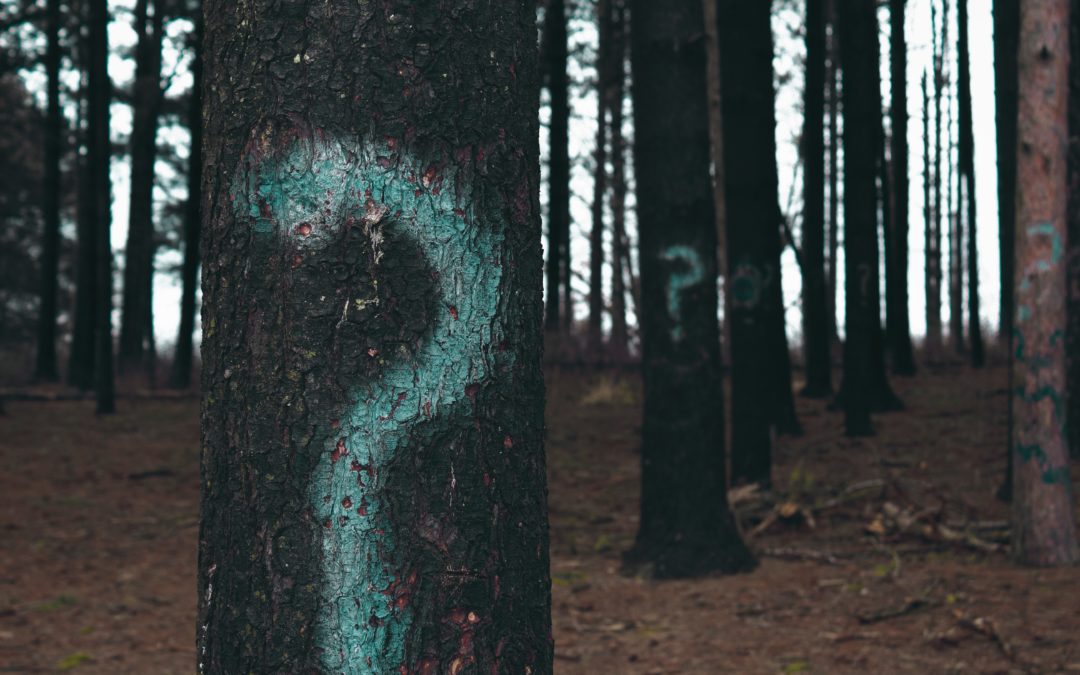
by Sandra Gulland | Apr 1, 2018 | Mistress of the Sun, Questions Readers Ask, The Game of Hope, The Shadow Queen, The Writing Process |
Readers often ask, “What’s next?” The answer to that question depends on when the question is asked, of course. What follows is an evolving diary, begun many, many years ago.
A reader wrote some time ago:
Are you going to write more stories about the court of the Sun King?
Yes!
You did such a great job with the historical details and as I have studied Louis XIV and his court— there are plenty of interesting stories to tell (including the adventures of the Princess Palatine, even La Grande Mademoiselle and Lauzun, a couple that united even after a prison term and old age only to break up over greed).
Indeed! By the way, I love La Grande Mademoiselle, but have yet figured out how to tell her story.
You could even do a trilogy of Louis XIV’s Mistresses— you’ve done La Vallière, next could be Montespan, then Maintenon (the king’s mistress, then second wife).
I believe she’s onto me.
Or a novel on Princess Henrietta as she has a tragic back story with her father being killed, her brothers Charles and James, and she had several romances during her marriage to her cousin Monsieur that are interesting reading, including one lover who was her husband’s boyfriend who falls for Henrietta and became a master of disguise to see her at any cost (De Guiche–who visited her as a fortune teller, a litter bearer and in a domino so he could romance her in Philippe’s presence at a masked ball).
What wonderful suggestions these are. Henriette would indeed be a fantastic subject.
I especially love the De Guiche stories, and in fact wrote many scenes of him hiding in the fireplace and disguised as a fortune-teller, etc., but these scenes, like many, many others, now reside in my cut file.
What I wrote in answer to this letter above:
I am considering writing a novel about Athénaïs (Montespan), but it might focus on her first engagement more than her relationship to the king. I’m not sure. It could also be a story told from the point-of-view of Des Oeillets, her maid who was the go-between between Athénaïs and Voisin, the convicted poisoner.
As this reader points out, there are a wealth of wonderful stories to be told. The hard part is choosing. It took me eight years to write Mistress of the Sun because I kept changing perspectives. I even included the unforgettable Mademoiselle at one point.
I did, in fact, eventually choose to tell the story of The Shadow Queen from the point of view of Des Oeillets (Claudette).
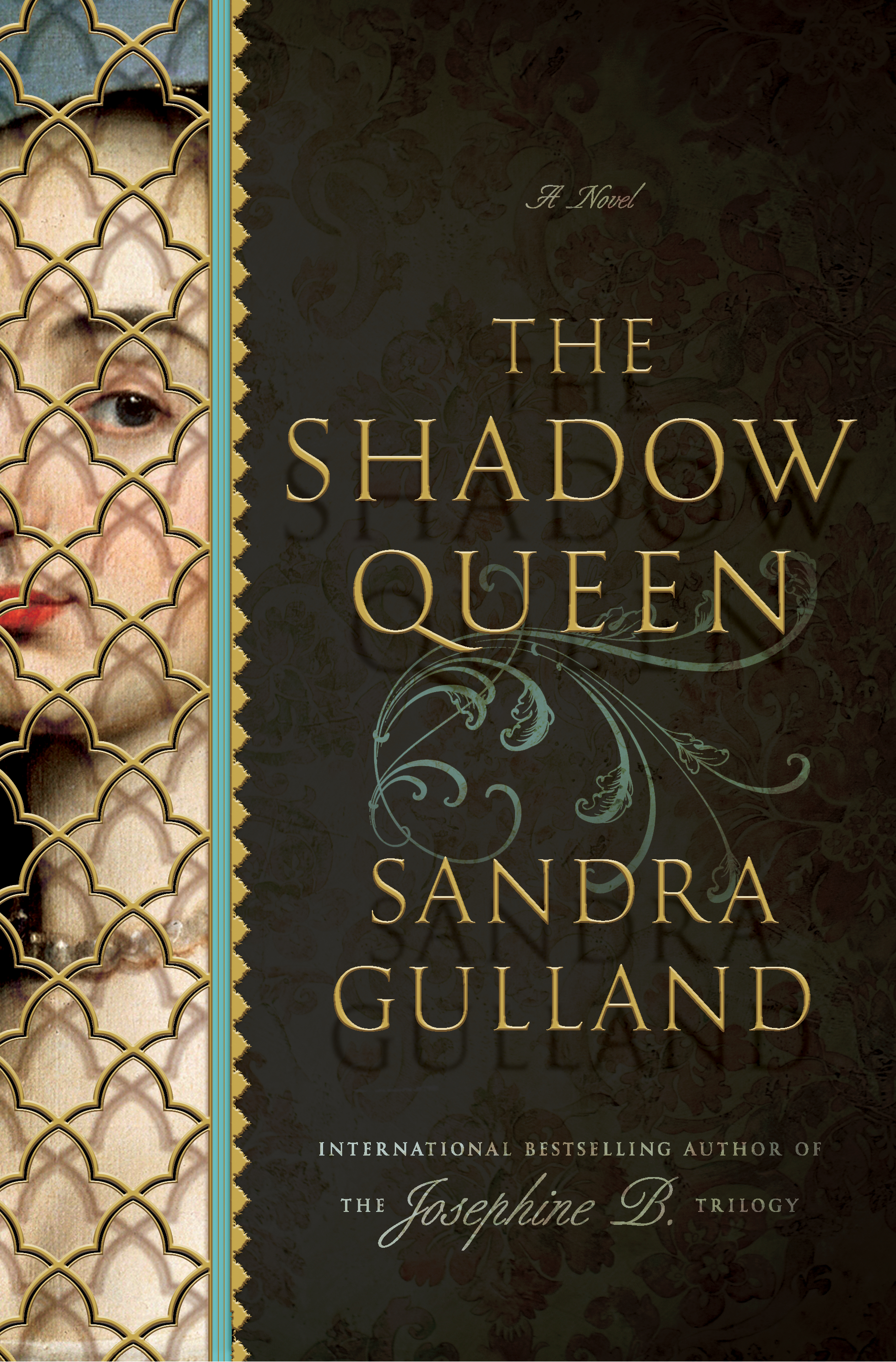
But to answer, “What’s next?” I am writing a Young Adult novel based on the teen years of Josephine’s daughter Hortense. I am back in the Napoleonic world!
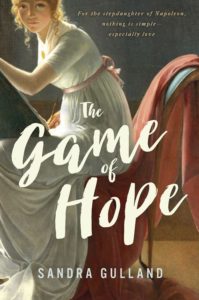
It’s Easter 2018, and Hortense’s story, The Game of Hope, will soon be published in Canada, two months later in the U.S.
As for what’s next? I’m writing — or, at least I think I’m writing — a novel about a teen, a girl falconer in Elizabethan England.
That story about Mademoiselle at the Court of the Sun King continues to haunt me, however. Might that be next next?
{Photo at top is by Evan Dennis on Unsplash.}SaveSave
SaveSave
SaveSave
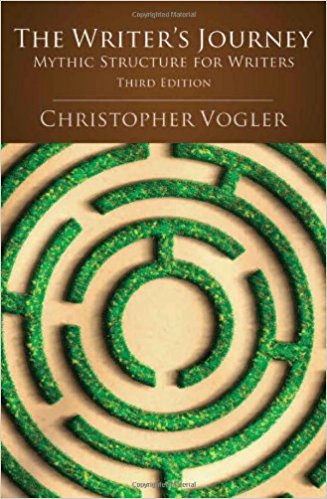
by Sandra Gulland | Mar 14, 2018 | Adventures of a Writing Life, On Character Development |
I promised in my last post on beginning a novel that I would write about creating characters.
Of course, to begin with, I have characters swarming, ideas both historical and fictional. I’ve already searched photo databanks for images that might fit. (Currently, I like using Unsplash for contemporary photos, largely because they tend to be more natural and have personality.)
These incendiary sparks are key, but at a certain point, I have to become analytical.
The first step: The Writer’s Journey
I begin this process by reviewing Part One of The Writer’s Journey; Mythic Structure for Writers, by Christopher Vogler. (This is a book on writing I highly recommend.)
I list the archetypes that traditionally most good stories need:
- Mentor
- Hero/Heroine
- Threshold Guardian(s)
- Herald
- Shapeshifter
- Ally (or Allies)
- Trickster
- Shadow(s)
And then I begin mulling over the characters in My Next Novel (working title, “Raptor Girl”). The roles can be combined into one character (i.e. Shadow and Shapeshifter). I know who my Heroine is, as well as my evil Shadow, and I’m fairly certain that the Mentor is my Heroine’s father. But looking at this list, I realized, Damn, I don’t have a Trickster! And I need one. I need someone to bring humor to this story.
So right now, at this point, I’m still mulling. But that doesn’t stop me from moving onto the next step.
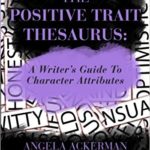
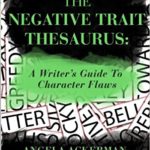
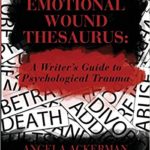
I love these thesauruses. There are more, and I’ve used them all at various stages of writing a novel. At this mulling-about-characters stage, they are a great way to brainstorm. It’s also a good way to identify where the confusions lie.
I immediately identified my heroine Molly as alert (she’s a falconer, after all), and I have a fairly good feel for her brothers and her mother, but her father and the villain remain just a little mysterious to me yet. And who the heck is the Trickster?
Is it the “Wild Woman”?
I’ve long been drawn to having a character I think of as “Wild Woman,” inspired by this amazing portrait:
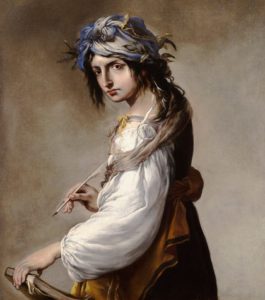
This is “Lucrezia as Poetry” by Salvator Rosa. (An amazing portrait, don’t you think?) But where would she fit in? (Speak to me, Lucrezia!) Might she be a Trickster? Quite possibly. She might well also be a Shapeshifter or even a Mentor.
I’m still in the mulling stage, but it’s time to put together files for all of these characters, including their images, their roles in the story, their positive and negative traits, and (most important) emotional wounds.
And then, step three: the fun part
Once all this begins to congeal somewhat, I will assign sun signs (unless, of course, they are already historically known), and give some thought to where they all fall on an Enneagram chart: Perfectionist? Nurturer? Achiever? Romantic? Observer? Skeptic? Adventurer? Leader? Peacemaker?
I used Enneagram for my most recent novel (The Game of Hope) and Caroline Bonaparte, the Villain, was clearly a #8 (the Boss, Leader or Challenger, depending).
I’ve just bought Believable Characters; Creating with Enneagrams by Laurie Schnebly—so I can’t report on it yet—but there are a number of helpful articles on the Net:
Additionally, if you get hooked on all this—warning: it can become a tempting diversion—there is an online 10-week course available:
Final step: integration
The final challenge will be to pull all this information together and begin to form an integrated concept of each character, filling out the details of their lives, their health, their appearance, their eccentricities.
And then, of course, let them loose in your story!
SaveSave
SaveSave
SaveSave
SaveSaveSaveSave
SaveSave
SaveSave
SaveSave
SaveSave
SaveSave
SaveSave
SaveSave
SaveSave
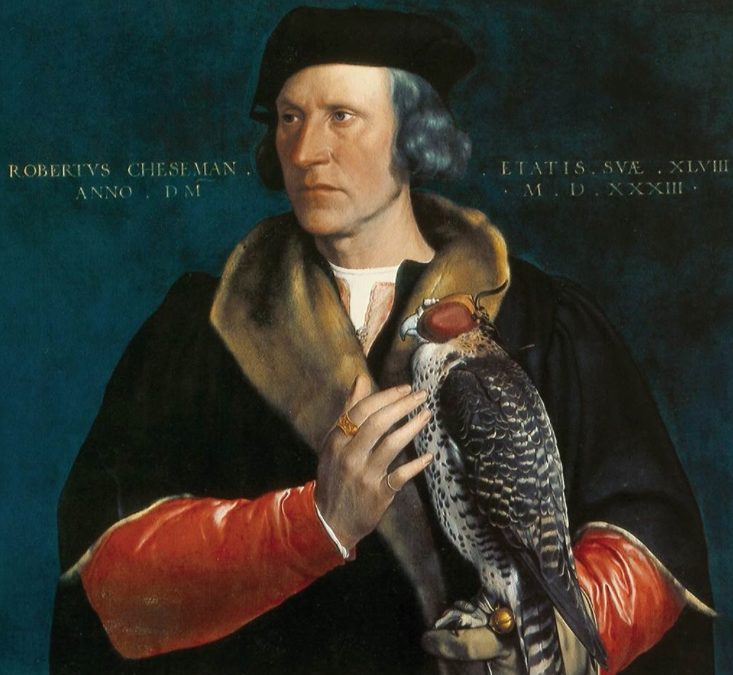
by Sandra Gulland | Mar 10, 2018 | Adventures of a Writing Life |
{Portrait of Robert Cheseman (1485-1547) by Hans Holbein the Younger. Might this be a model for my heroine’s father?}
I’m at the beginning of writing my next novel, and it’s a joy. I feel happy as a kid in a sandbox. It’s a slow process of discovery, and I expect it to take all year.
The things about my writing process that never change
This will be my seventh novel (ninth, counting the two thankfully unpublished ones), and there are a few things that always remain the same:
- I always feel like a novice starting out.
- I always change my method.
- I always experiment with process.
Story Genius: a great book on writing
This time I’m following the advice given in Story Genius; How to Use Brain Science to Go Beyond Outlining and Write a Riveting Novel (Before You Waste Three Years Writing 327 Pages That Go Nowhere) by Lisa Cron.
By following, I mean that every time the author writes WHAT TO DO, I do it.
Here’s an early example from page 52:
WHAT TO DO Now, you try it. Write a What If that’s as fully fleshed out as you can make it, but still concise.
Here’s another example from page 118:
WHAT TO DO Now it’s your turn. Your goal is to zero in on three turning point scenes that will yield the most story-specific info, the most potent grist for the mill, so that you can, indeed, begin your novel in medias res.
The point of Story Genius is to identify the moments in your main character’s past life that result in an emotional wound so deep that it will propel her (and us) through the novel. It’s a slow process of discovery, but very worthwhile.
I’m at page 194 now, and at this point I’ve written three pivotal scenes from my main character’s early life, an opening scene and a critical scene at the end of the novel. (Cron makes it clear that all of this will inevitably change.)
Getting into the nitty-gritty
Now the task is to begin to “blueprint” the novel, first by setting up folders for each character, for scenes, for ideas, and for the world the story unfolds in. I plan to do all this in Scrivener, but I’m beginning by exploring my characters in more depth.
This, alone, will take time, but it’s truly a pleasure. In my next blog post, I intend to share the tools I have used in the past to develop character, along with some excellent new tools I have discovered.
SaveSave
SaveSave
SaveSave
SaveSave
























